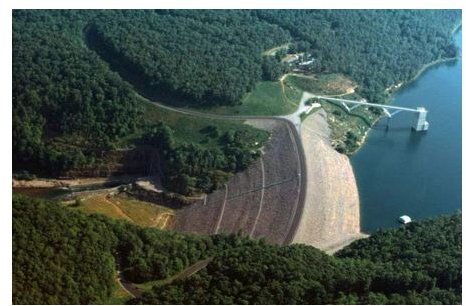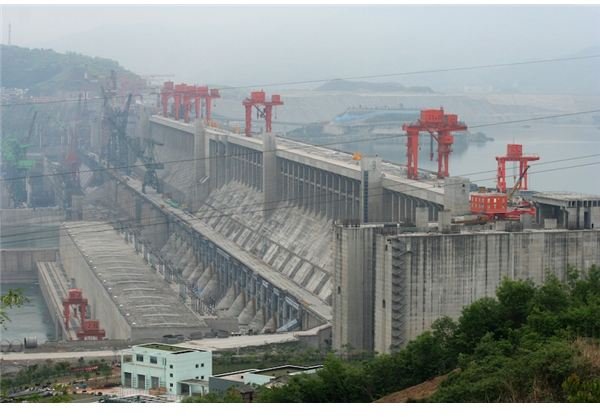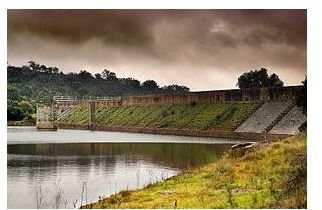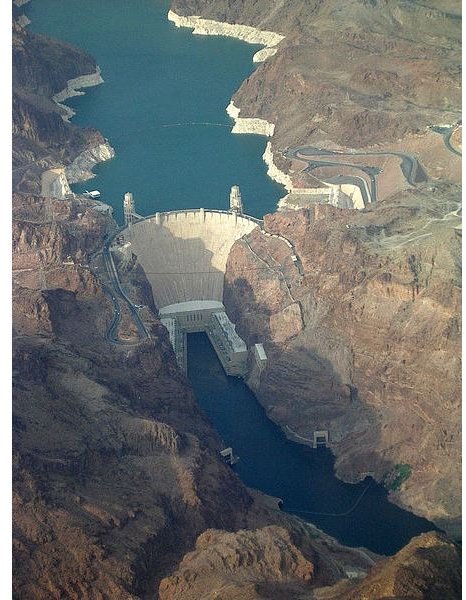Complete Guide to Hydroelectric Plants
How Does Hydroelectric Power Work?
Mankind has used the latent energy of running water to power everything from grain mills to iron forges. Generating electrical power
from rivers is a relatively new development, having become widespread ‘‘only’’ about 120 years ago. Hydroelectric power requires a few ingredients, a large river, a natural choke point, and a concrete or earthen dam. The short-version answer to how we generate power from such a combination is that water pressure drives a turbine, generating electricity. How much energy you get depends on the ‘‘head’’, the industry term for water pressure. The need for water pressure means that deep reservoirs need to be created by building large dams. However, a few dams do not have reservoirs, with just the current being sufficient to drive the turbine.
The Many Flavors of Hydro plants
Most people think of a towering concrete wall across a river valley as the archetypal image of a hydro plant. This is not surprising

considering how widespread images of dams of this style are. In many places, however, there are either insufficient funds, a difficulty in transporting building materials, or un-cooperative geography that results in there being many different varieties of hydro plants. Some are low and squat, to compensate for low valley walls, others are very tall to in order to build enough water pressure, some are even made of dirt! The fact that engineers must adapt the design of each dam to the local topography makes the construction of every one a unique challenge.
- How Do You Know Where to Build One? Location, Location, Location!
- Hydro Plant Classifications Part 1: Based on the Quantity of Water Available
- Hydro Plant Classifications Part 2: Based on the Nature of the Load
- Gravity or Arch Dams?
The Hydro Hall of Fame: The Best, Biggest, and Most Influential
Some of you readers out there may think of a hydro dam as little more than a wall holding back the water. However, from an engineer’s perspective, some hydro dams are stunning construction achievements, whether because of the awesome forces they resist on a daily basis, or based on the sheer achievement of the design engineers creating an enduring technological marvel like the Hoover dam with the technological or budget limitations of the

time. Since man must go to the river, some of these dams are built in very remote areas, which makes the logistical achievement just a notable as the engineering.
- Building the Hoover Dam: The True Cost of Building a Modern Wonder in the Middle of Nowhere
- Interesting Facts About the Itaipu Dam
- Three Gorges: The Chinese Behemoth
- Top 10 Hydro Plants in the World Part 1
- Top 10 Hydro Plants in the World Part 2
- Top 10 Hydro Plants in the World Part 3
Hydro Power Benefits
How does zero pollution and carbon emissions sound to you? Compared with other renewables, hydropower is more efficient, cheaper to build, and easier to maintain. Even if you are a hardcore man-made global warming skeptic like me, the efficiency of a power plant that can electrify entire provinces without an imported fuel source, that produces no toxic waste products, has a usable life approaching 100 years, and requires very little maintenance, is an attractive source of energy indeed. Not only do hydro plants provide clean energy, and lots of it, 24 hours a day, the water reservoirs that most dams require provide drinking water for metropolitan areas and irrigation for nearby farmland, and the

reservoirs themselves create the perfect enviroment for water sports and fishing.
- Benefits of Hydropower
- Not Just Rivers: Renewable Energy From Other Waterpower Sources
- The Most Efficient Power Source Anywhere: Hydro Blows the Rest Out of the Water!
- Got a Stream in Your Backyard? Kiss Your Electric Bill Goodbye for good with a Micro-Hydroelectric Turbine!
Risks and Problems
No matter how good the cake looks, it can still have its sour parts. Dams can force entire cities to relocate, destroying communities and sometimes entire cultures. While hydroelectric dams have a very good safety record over all, the consequences of a collapse can wash away entire cities. They also interrupt the natural flooding cycles and sediment-carrying properties of rivers. A consequence of the Aswan Dam on the River Nile, for example, that the historically fertile Nile River valley now requires imported fertilizer to maintain yields, since without the annual floods, the farmland no longer has a natural source to replenish the nutrients in the soil.
- Problems Surrounding Hydro Dam Construction
- Risk Factors to Consider Before Dam Construction
- Negative Impacts of Dams and How to Mitigate Them
- Calculating Dam Break Probabilities
- When The Dam Broke: The St Francis Dam Catastrophe
References
- Photo Credits: All Images in the Public Domain. Source: http://en.wikipedia.org/wiki/Dams
- Linked Articles

